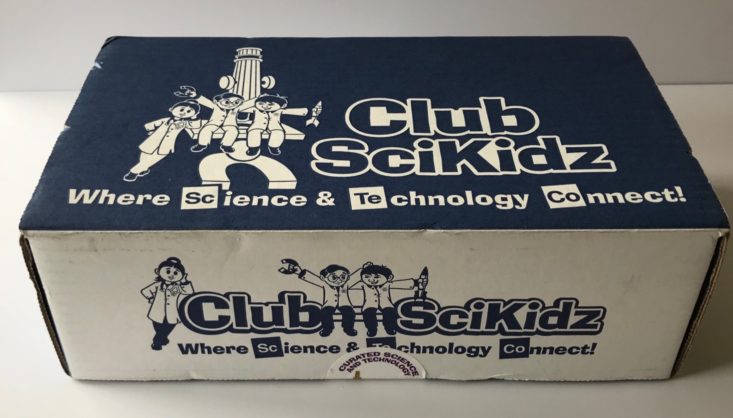
Club SciKidz Labs is a subscription box for children ages 7-10. Each month your box will be filled with lab equipment and hands-on STEM activities, science experiments and engineering projects.
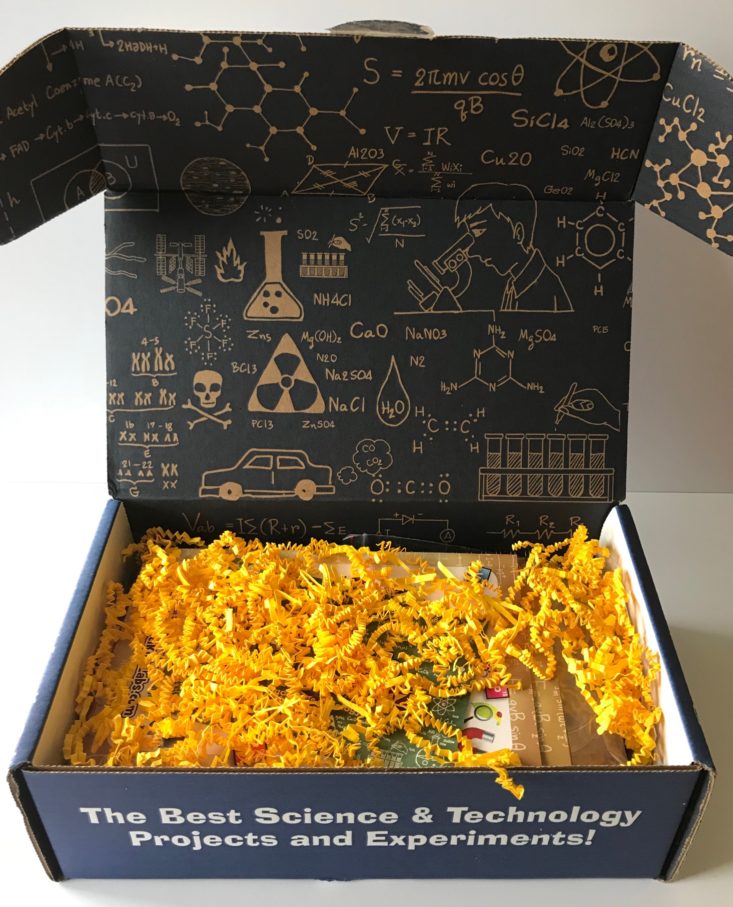
The first box that you will receive is the Welcome Box which includes an exclusive Lab Notebook you can use for experiments in future boxes.
This review is of the Club SciKidz Labs Welcome Box.
This box was sent to us at no cost for review purposes. (Check out the review process post to learn more about how we review boxes).
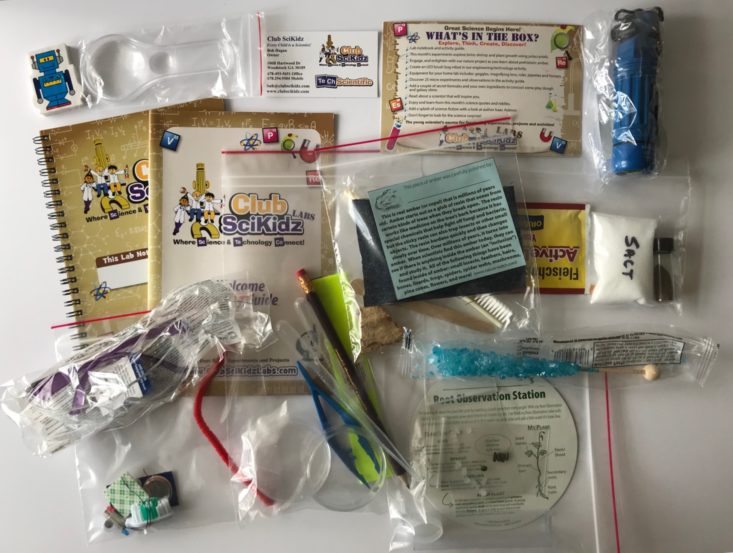
About Club SciKidzLabs
The Subscription Box: Club SciKidz Labs
The Cost: $29.95 per month + free shipping
The Products: Each monthly lab kit includes hands-on STEM activities, science experiments, engineering projects, nature crafts, lab equipment and various other items.
Ships to: U.S. and Canada
Club SciKidz Labs Welcome Box Review
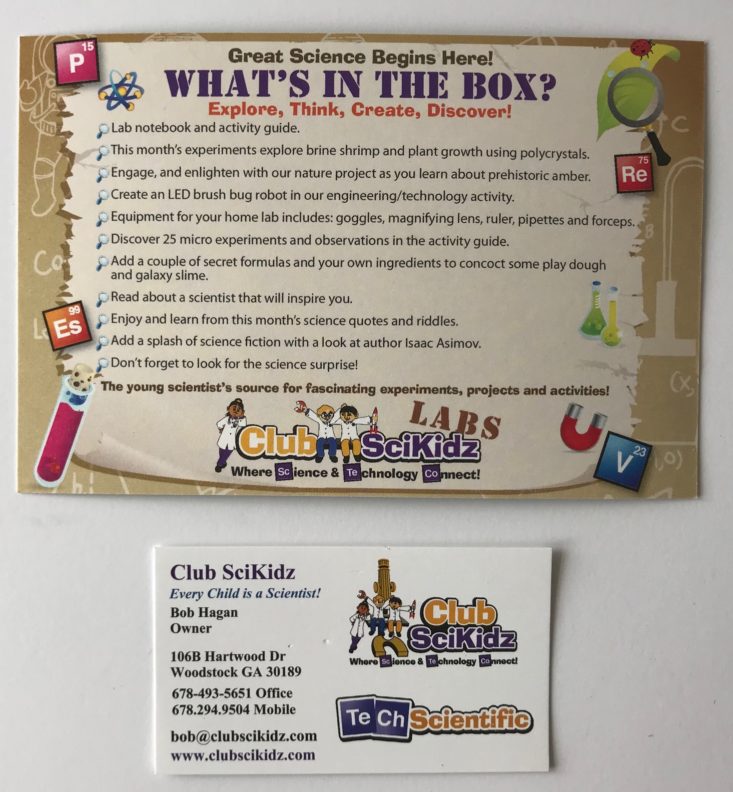
Included in the box was a card titled “What’s in the Box?” which listed some of the items and activities included in the box. They also included a business card for the owner including his contact information which I thought made it seem a little more personal than your average box.

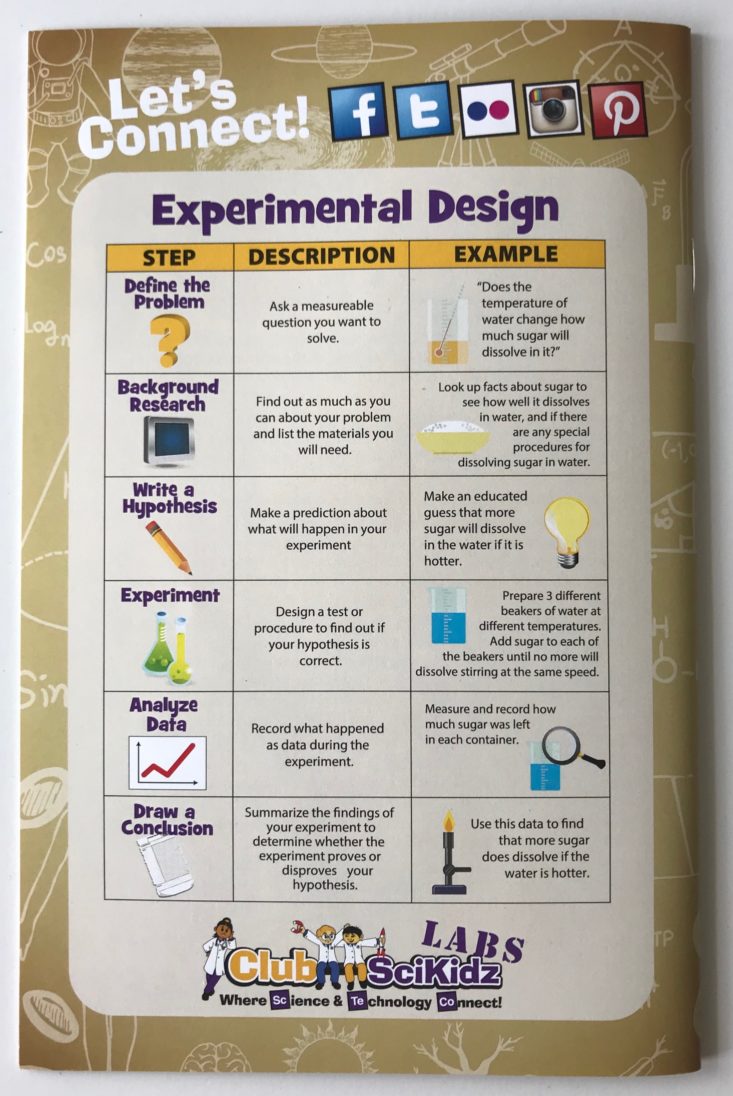
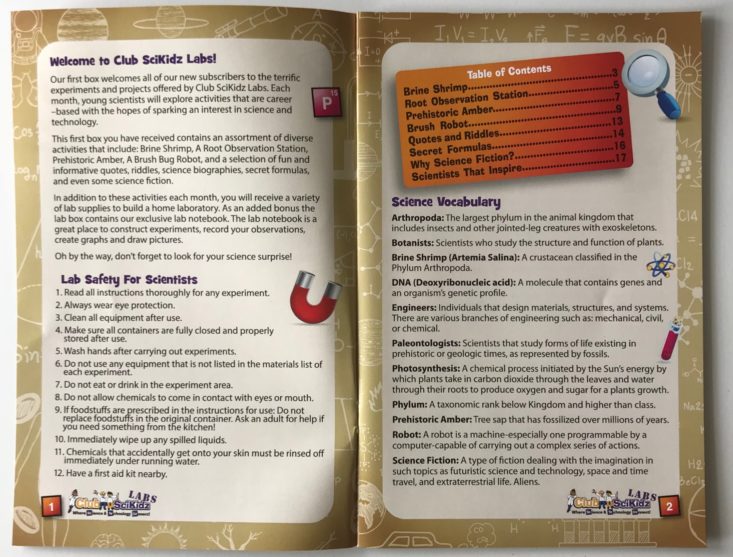
The included Welcome Activity Guide had a great chart on the back describing Experimental Design. This was a great reminder for someone like me who has long forgotten this information. The whole guide was filled with useful information such as a lab safety list and even science vocabulary related to the specific experiments and projects in the box.

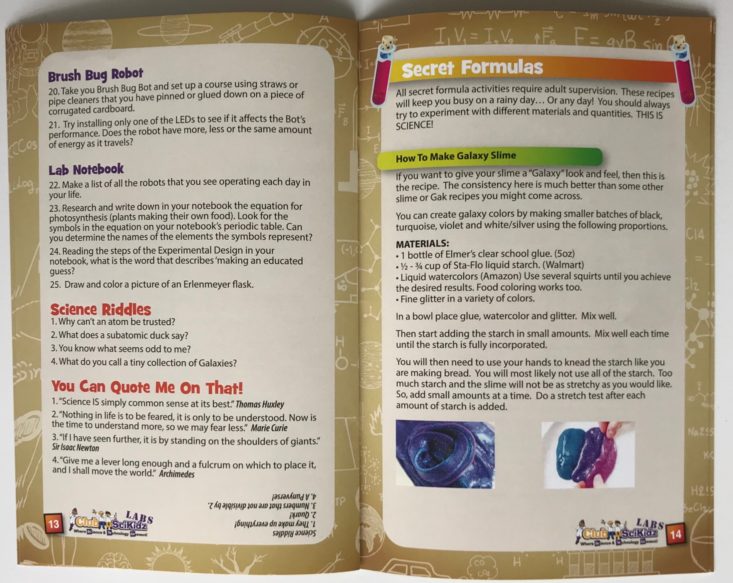
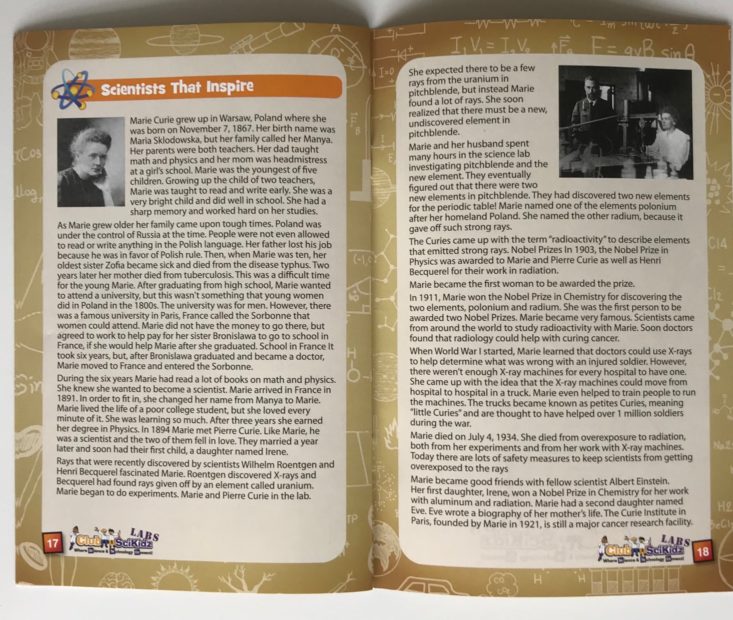
The center of the guide was filled with instructions for the projects and at the back, they had various micro experiments and observation ideas to explore those projects a little bit further if you wanted. They also included a biography on Marie Curie in a section entitled Scientists That Inspire. I thought it was great that they included all of the extra information and activity ideas.
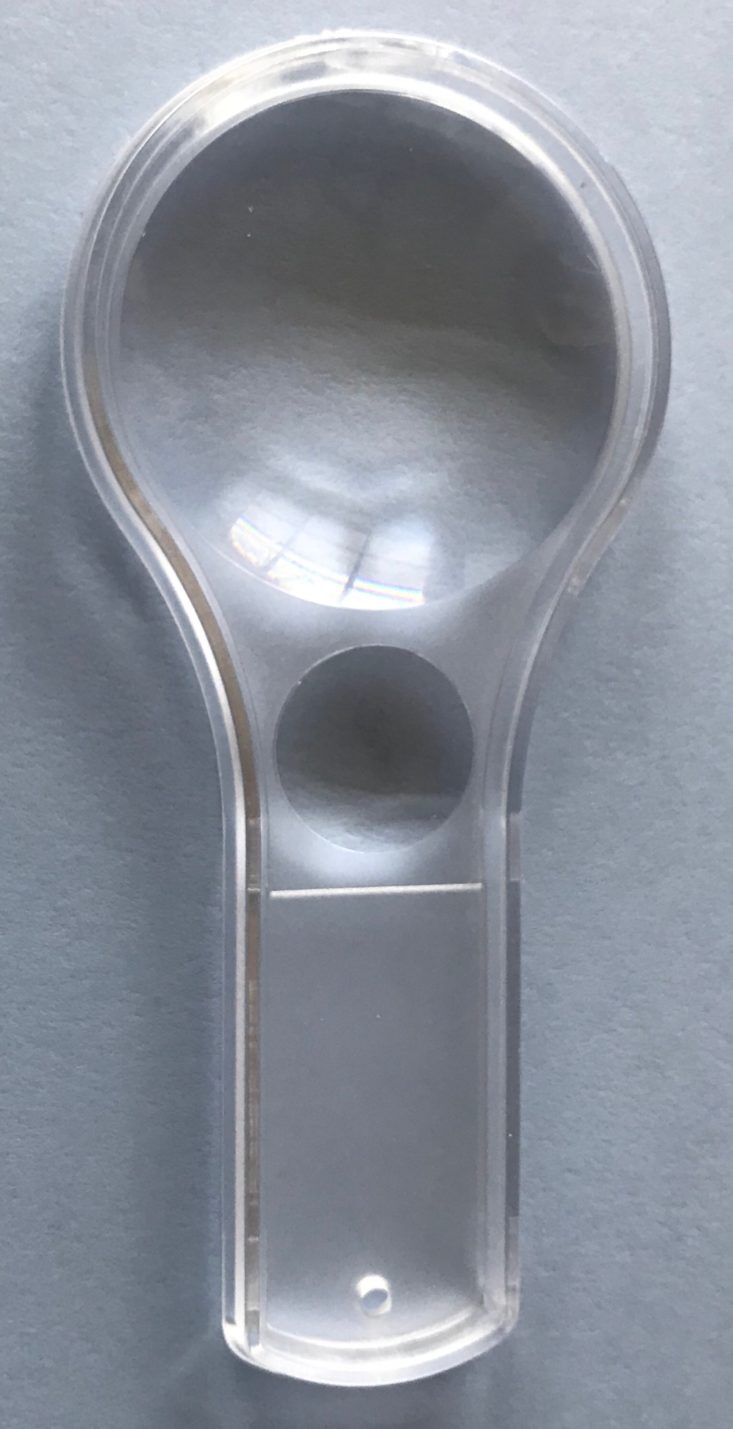

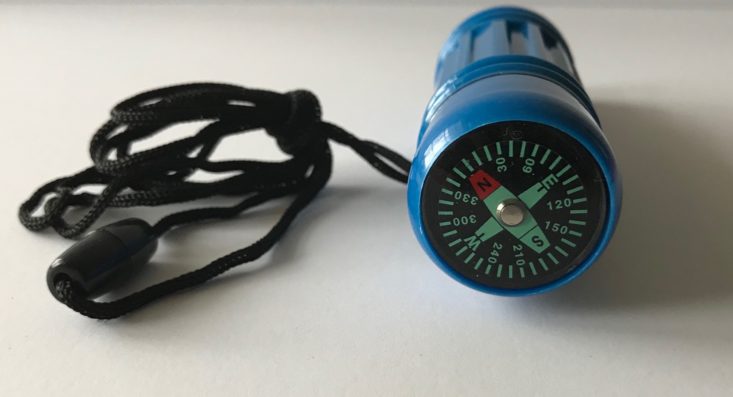
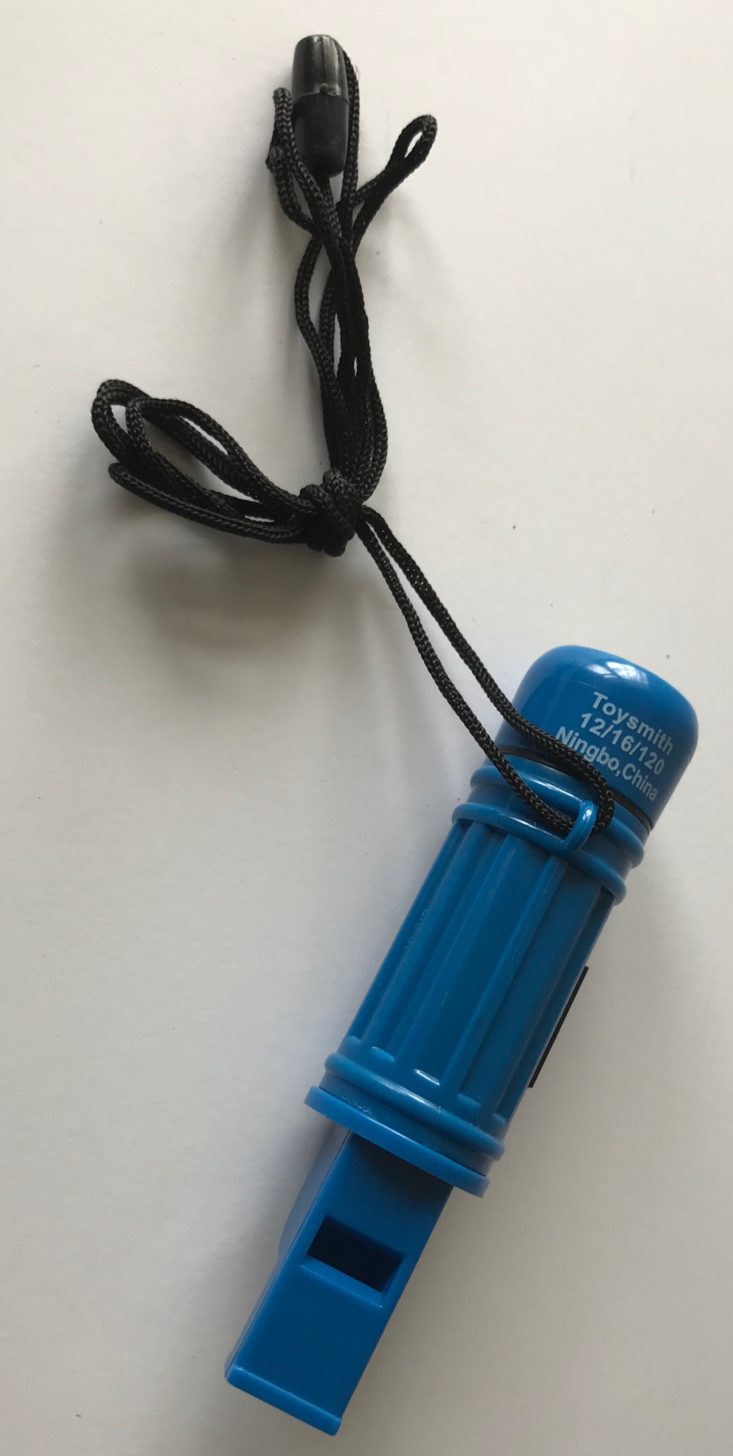

Since this is the Welcome Box they included some basic lab equipment for your home lab. The magnifying glass is a must-have for observing your experiments. They also included a Survival Compass that contains a built-in whistle and opens up so that you can store small items inside. It’s attached to a cord so your little scientist can take it with them the next time they go exploring.



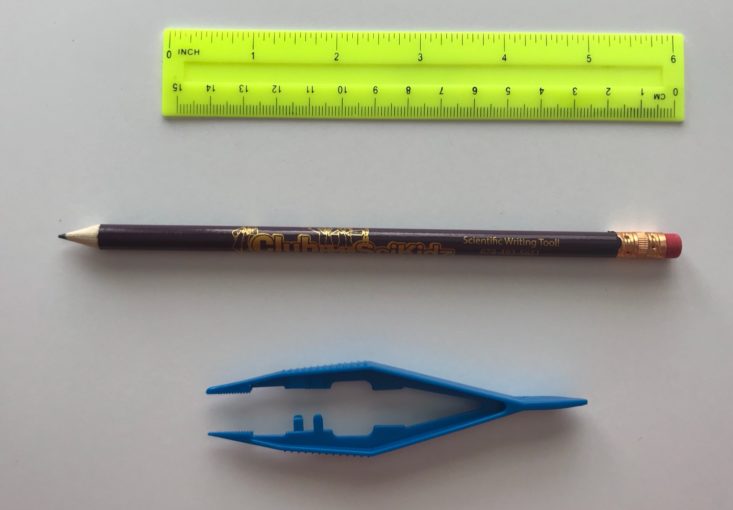
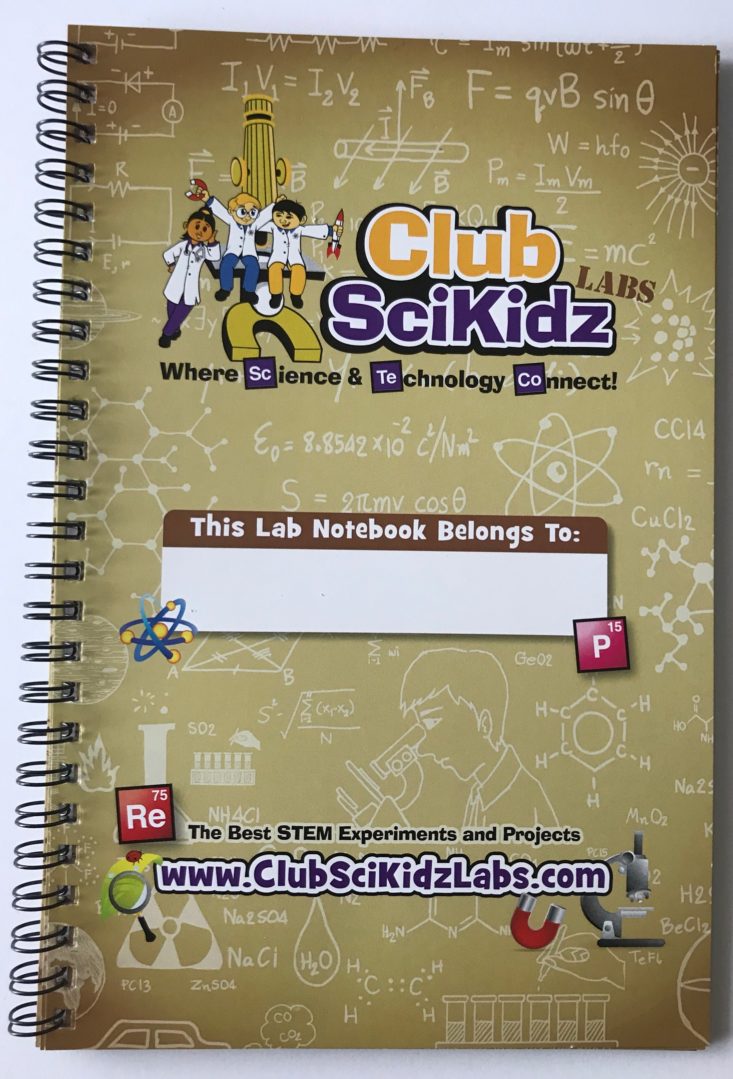
Some other must have equipment that they included are a pair of safety goggles, a ruler, tweezers, a pencil and a Lab Notebook. The goggles are nicely made and the tweezers are plastic and kid friendly. The pencil has the Club SciKidz name on it and came pre-sharpened and the Lab Book is filled with more great information:

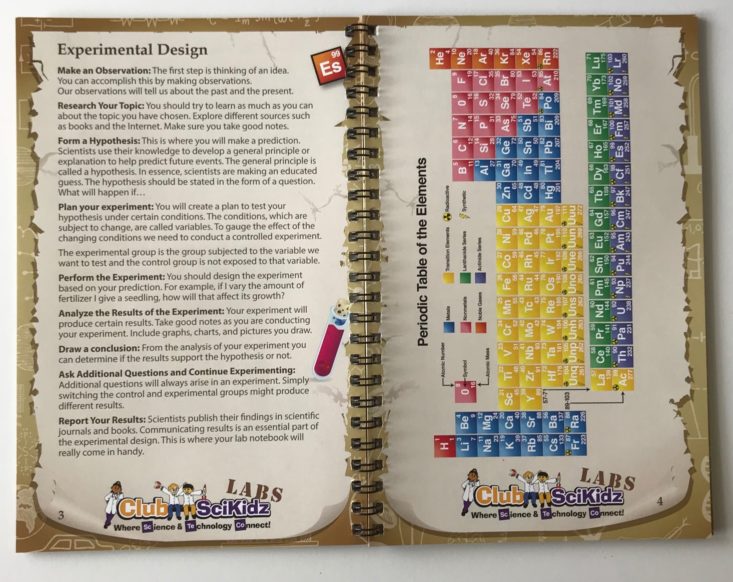
The front section of the Lab Notebook includes various measurements and also explains how you might use the notebook. The next page goes into further detail on the steps of Experimental Design and has a full-color periodic table for reference.
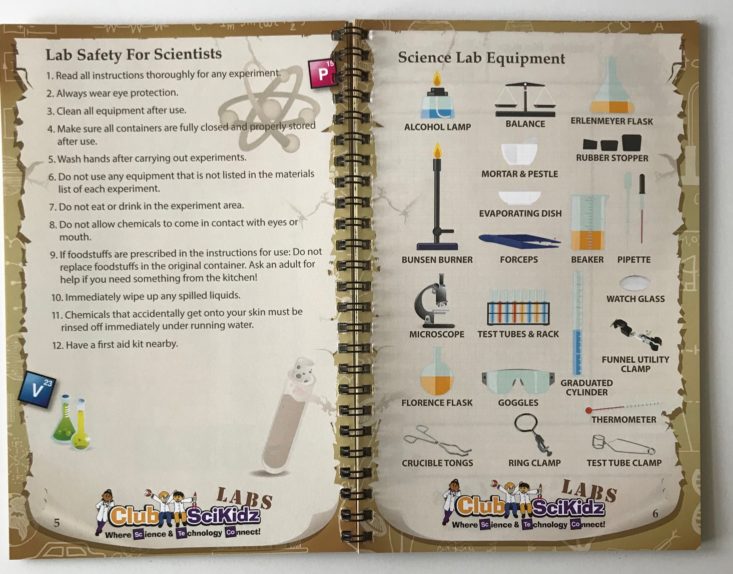
The next section includes a Lab Safety for Scientists checklist and a list of Science Lab Equipment complete with pictures. More great references for you and your little scientist!

The rest of the notebook is filled with several pages for Activity and Experimental Notes.There is room to record your observations, draw pictures, or create diagrams. Overall, this is the perfect notebook for a budding scientist chock full of information and plenty of room to record their own ideas.
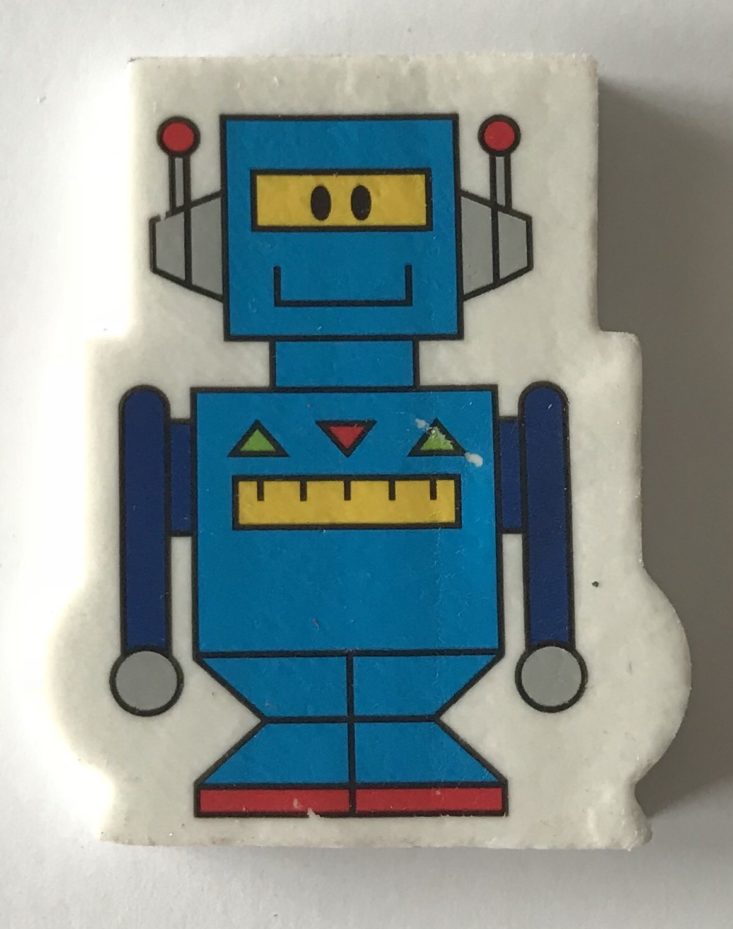
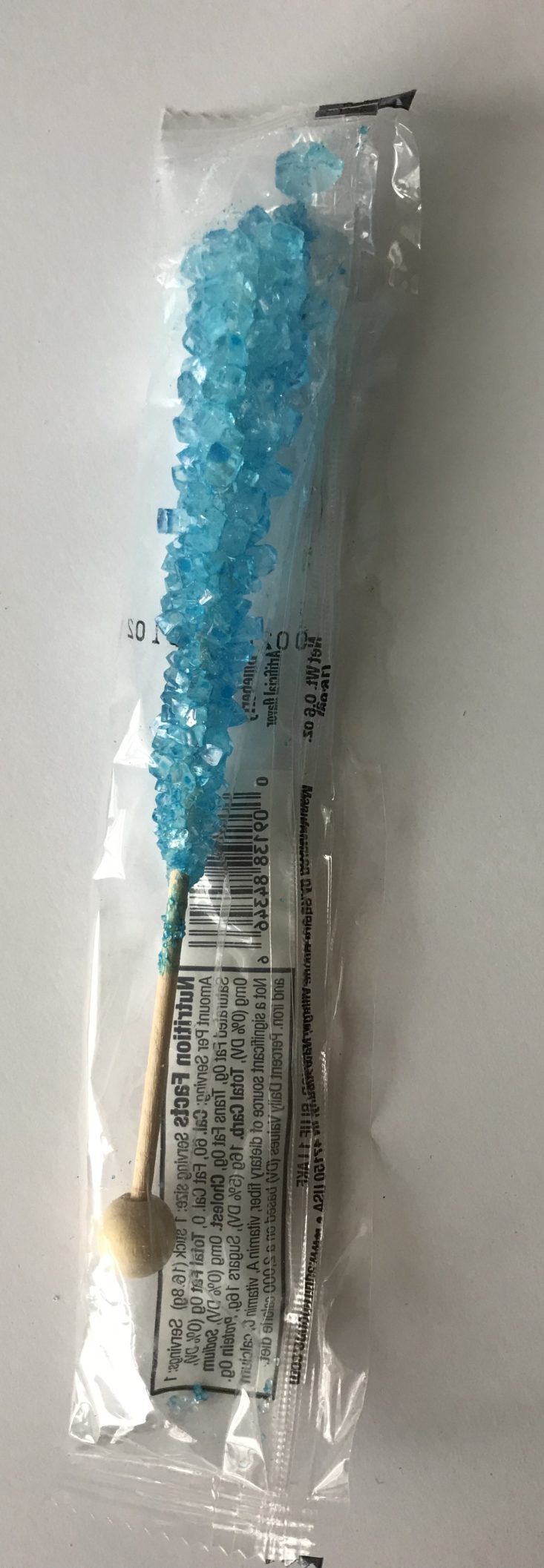
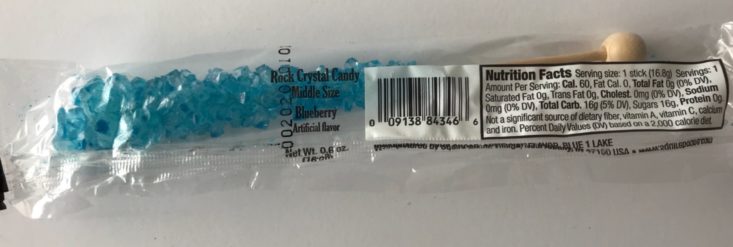
A few fun treats they included were this robot eraser and a stick of rock candy. These are both great little surprises that relate to some of the experiments in the box.
Activity #1: Nature Project: Prehistoric Amber


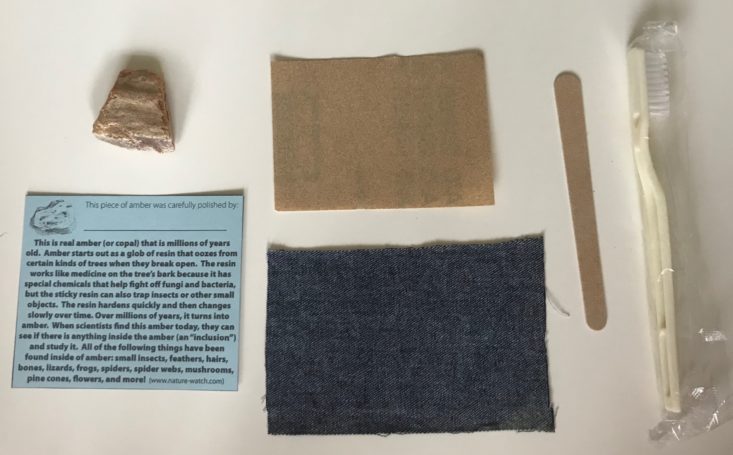
The activity that we tried first was the Nature Project: Prehistoric Amber. They included some background information about the amber and then provided a list of materials and the procedures. The only extra item we needed was some toothpaste and a little bit of water to rinse it off.
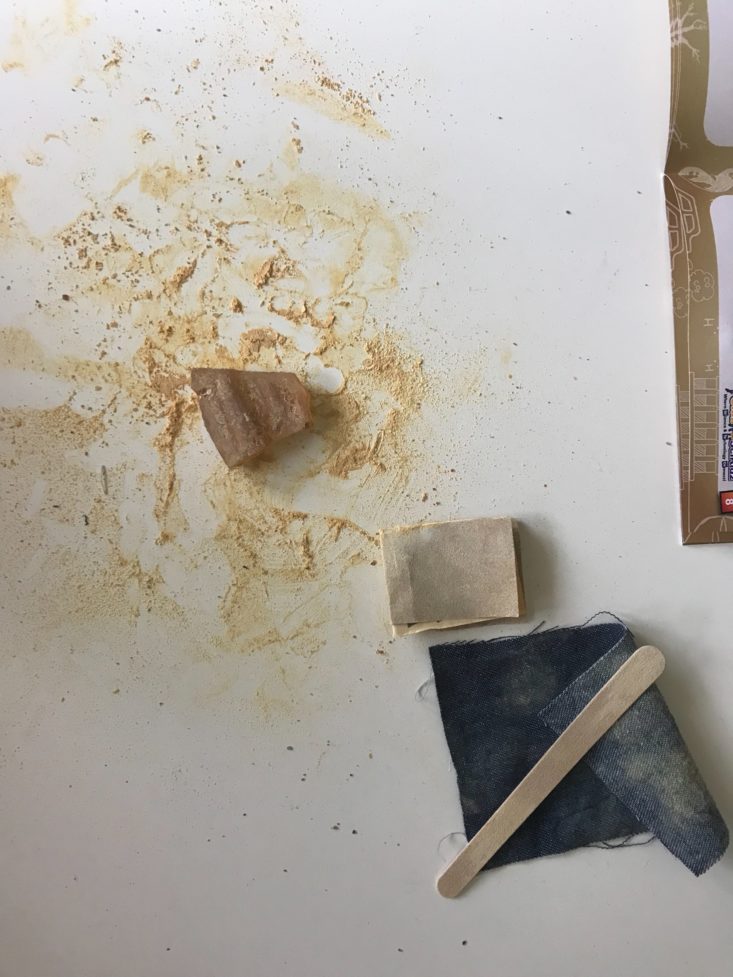
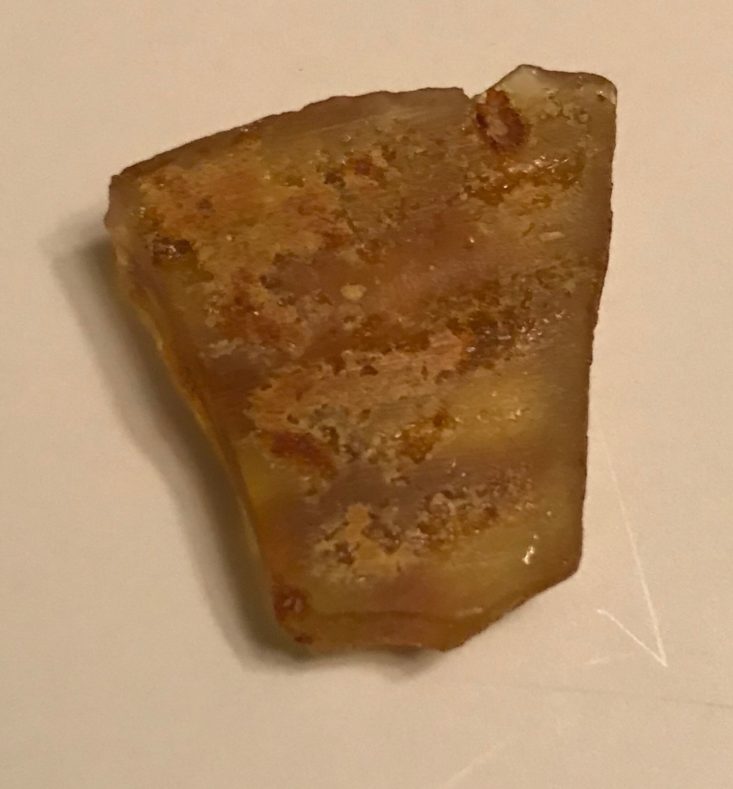
This was a fairly easy activity that involved using the included sandpaper and emery board to polish the enclosed piece of amber. This activity was much more tedious than I thought it would be and after a good 15 minutes of sanding this was our result. We used the denim to wipe off the dust and then used the toothpaste and enclosed brush to rub off any excess. Then I rinsed it and we were able to see through a little bit of the amber, but we still have a ways to go.
The fun of this activity is that there might just be an insect fossilized inside of it. So for a 7-10-year-old, this would probably be pretty exciting, but it could also get a bit frustrating because it does take a good bit of time, patience, and arm power to sand it down. I think the engagement level could vary from child to child, but that’s why it’s so great that they include many different experiments and activities since their interests can be so varied.
Activity #2: Engineering Project: Brush Robot
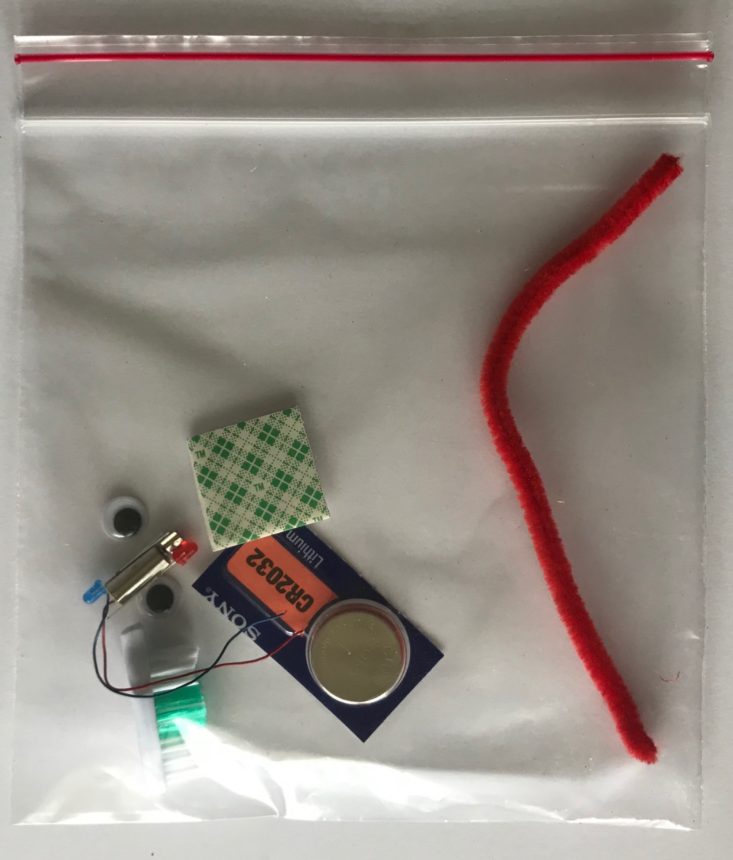


The next activity we chose was the Engineering Project: Brush Robot. Again there was a little introduction section about the science behind how your brush bot should work followed by a materials list and the procedures. Extras that were needed were diagonal wire cutters (I made do with what we had) and an extra piece of tape.
The directions for this one were a little bit hard to follow because they started by asking us to cut the handle off of our toothbrush which had already been done for us and then it asked us to stick the motor to that. The motor in the picture was a round flat motor that could easily be stuck to the toothbrush head, but the one we received was a cylindrical shape which we had a hard time getting to stay on.
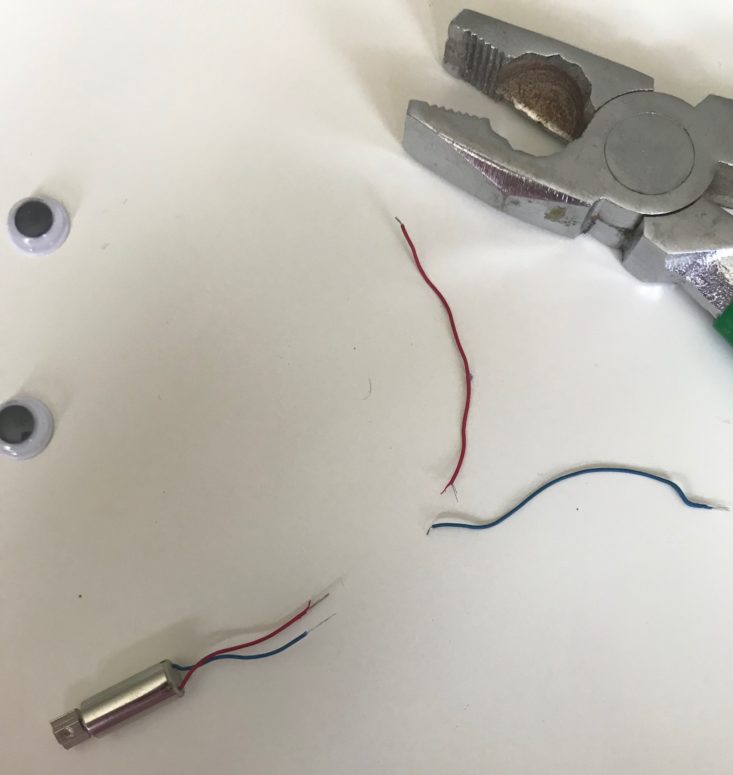
Next, we were supposed to add the battery using the sticky pad and keep the negative (black) contact for the motor under the battery. Our wire was blue instead, which was easy for me to decipher, but for a kid, it might be a bit confusing. Also, our wires were much too long so we had to cut them back a bit. This is definitely something I would think requires parental assistance as the wires were very, very thin and difficult to work with.
Then we were to tape the other wire to the top of our battery which would cause our robot to jump and buzz around. This worked for a minute, but our cylindrical motor kept falling off because the vibration was too much for it.
Next, I added our blue LED light, which worked, but as soon as I added the red one, it turned off. I guess the battery was only strong enough to power one light at a time. There weren’t any pictures or instructions on what to do with the googly eyes, but the pipe cleaner was part of an extended activity for setting up a course for your bug to follow. We didn’t get to do this on account of our bug not really sticking together very well, but if it had worked better, this would have been a fun idea!
Activity #3: Brine Shrimp Experiment

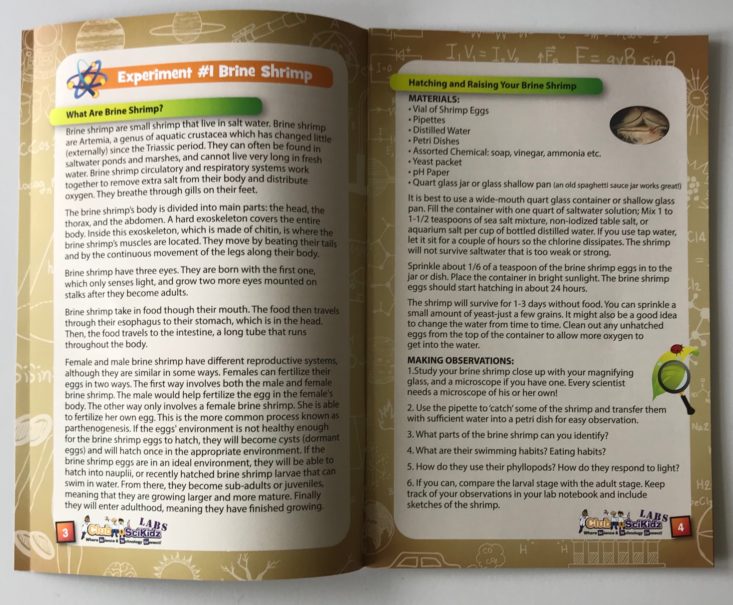
The first actual experiment was the Brine Shrimp experiment. We get to hatch our own shrimp and while they include most items, there are still some additional items you need, but can likely find around the house such as vinegar, soap, a jar or shallow glass pan and distilled water (although they also give instructions for using tap water too).
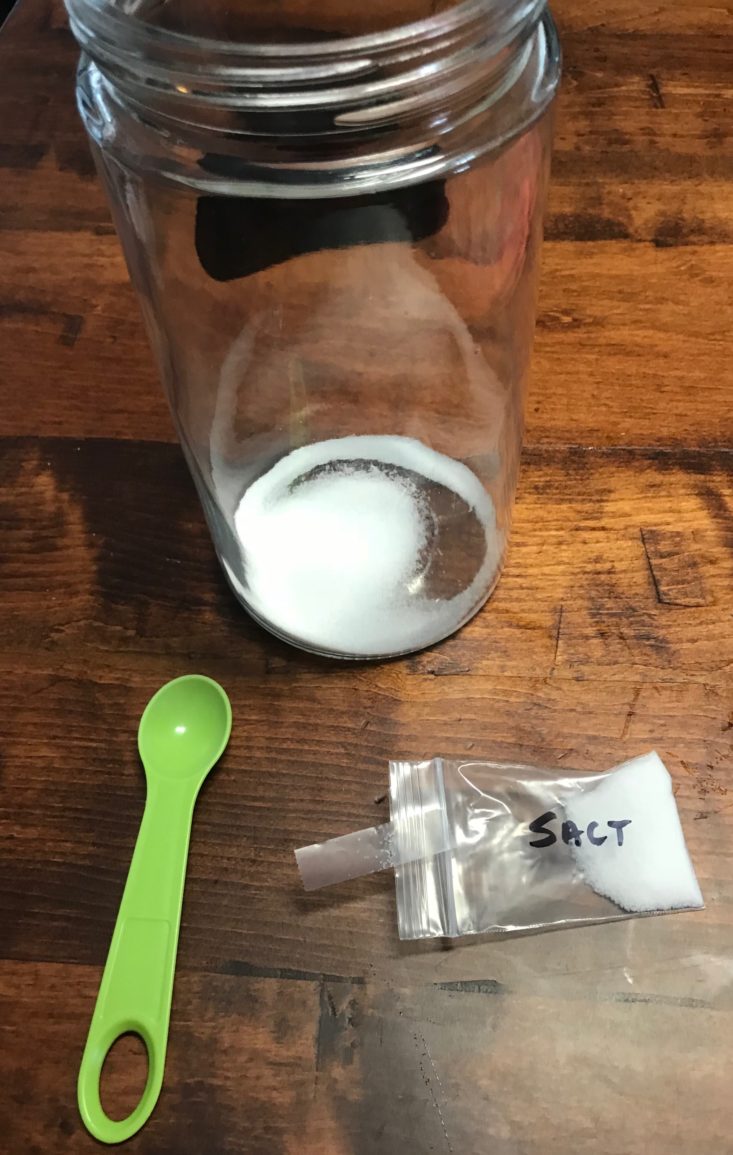
We didn’t have any distilled water on hand so instead, we followed the directions for the tap water. I was able to find a glass quart container, but a quart is bigger than I thought, so hopefully, this is something that others will be able to locate in their homes as well! First I added 5 teaspoons of the included salt and dissolved it in the water. (They recommended 1- 1 ½ tsp per cup of water so I went in the middle and did 1 ¼ tsp). As you can, see there was still plenty of salt leftover.

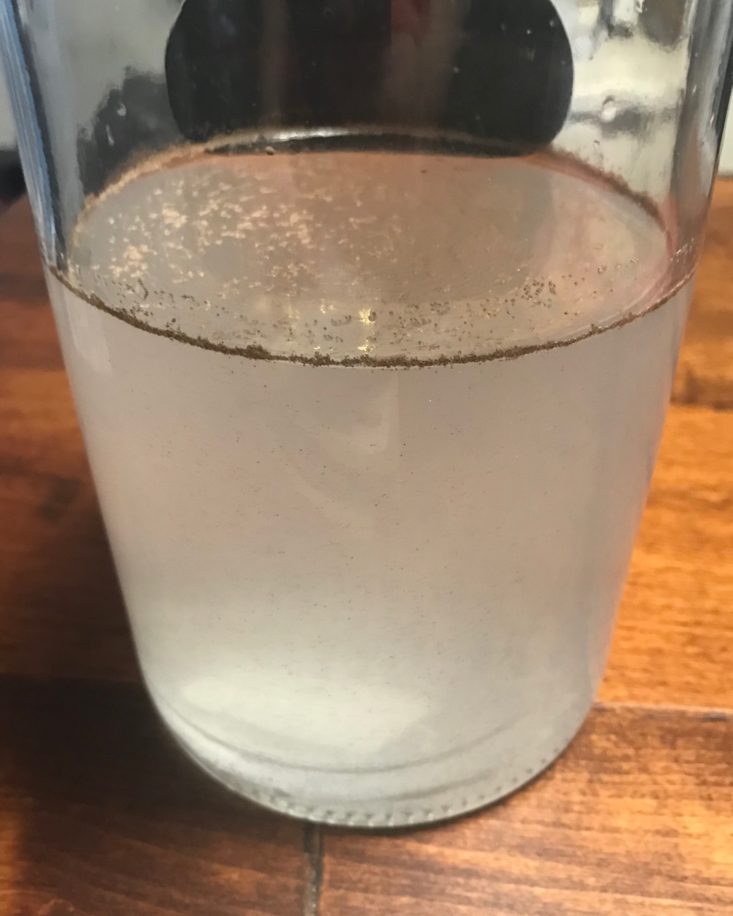
The next step was to add ⅙ of a teaspoon of the vial of shrimp eggs to the water. I just guesstimated a bit and went just under a ¼ tsp. As you can see the eggs are very tiny and there are a lot of them! Now, we wait!
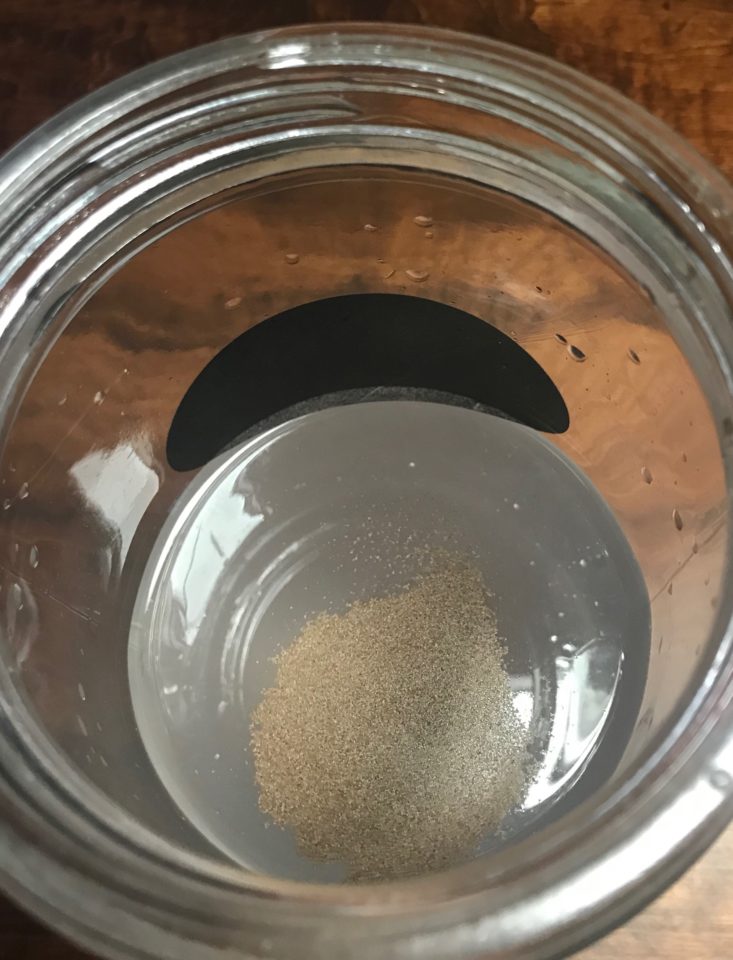
We are to keep our shrimp in direct sunlight and should see them hatching in about 24 hours. This is where the observation comes in and where our magnifying glass will come in handy. They included Petri dishes and pipettes that we can use to capture some of the shrimp and observe different characteristics. If you have a microscope, you can really get a good look. They provided several observation points to focus on and described how you can use your lab notebook to record it all.

They also included yeast to feed them, but they won’t need food for the first 1-3 days of their lives. The extra eggs and Petri dish can be used to complete some of the extended activities as well as the included piece of PH paper. The base experiment itself is very simple, but the extended activities allow for a lot of extra exploration and even more experimentation.
Activity #4: Root Observation Experiment
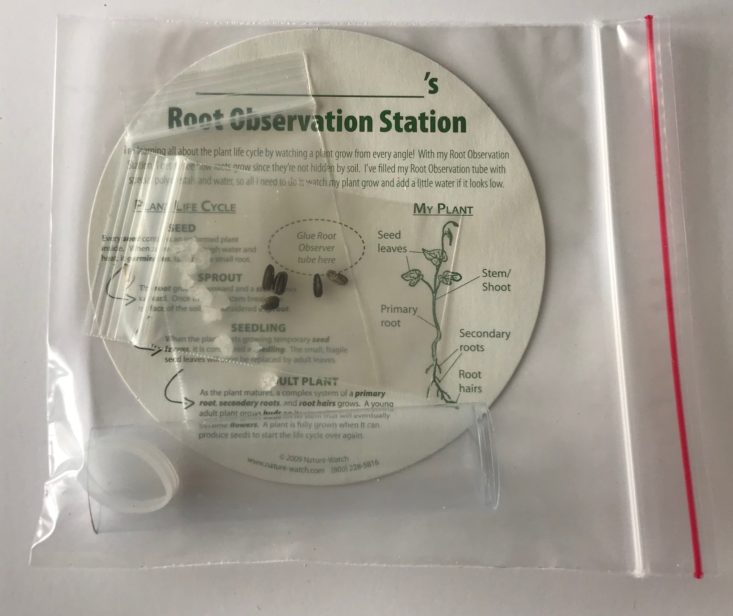
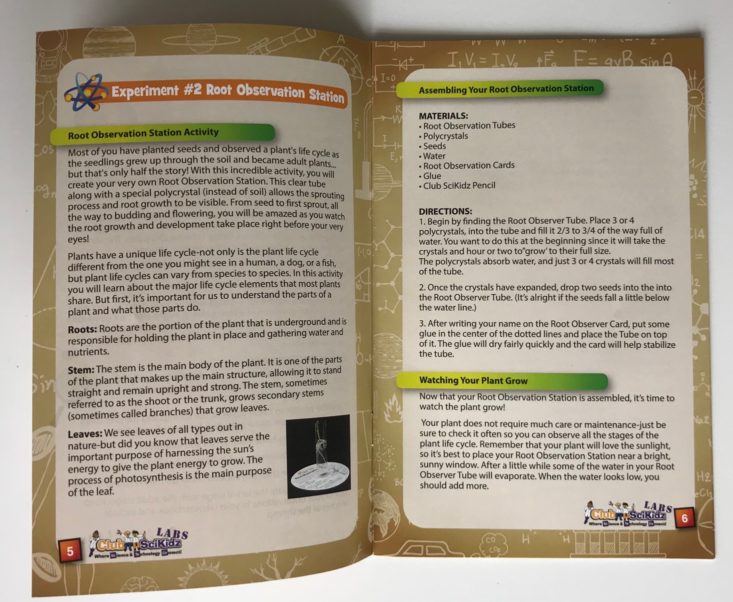
The second included experiment is a Root Observation experiment in which you will get to observe the roots of a plant growing by using a clear tube and clear polycrystals instead of soil.
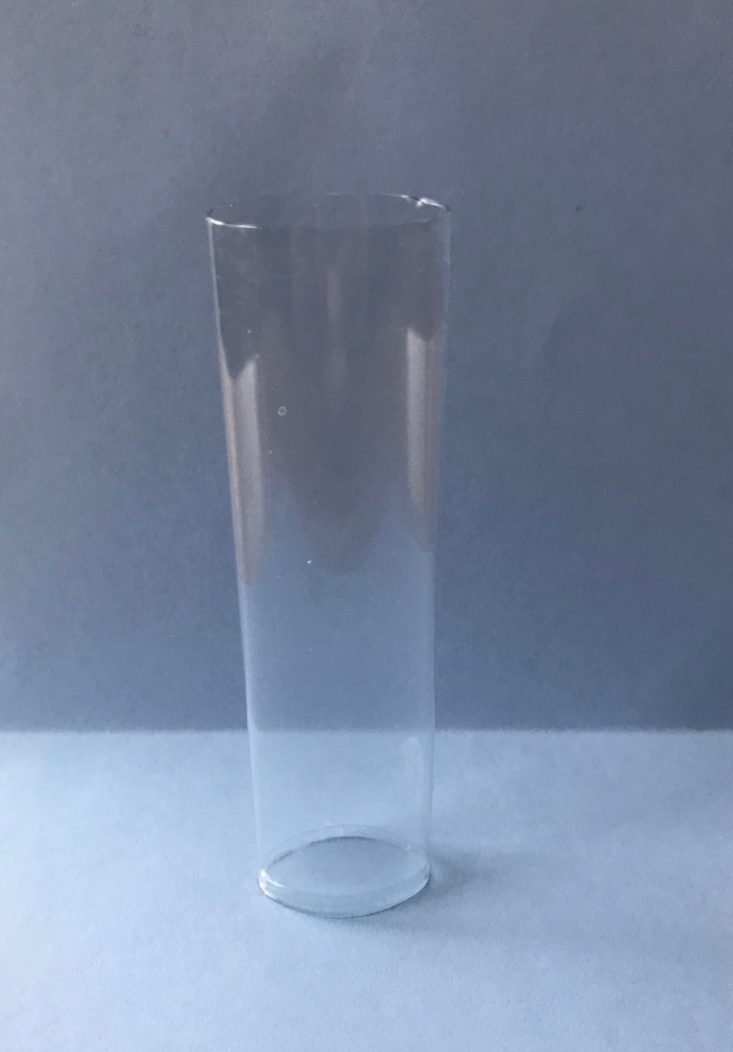
Unfortunately, the included plastic tube for ours had a tiny crack in the bottom and was leaking so we made do with a shot glass we had on hand.
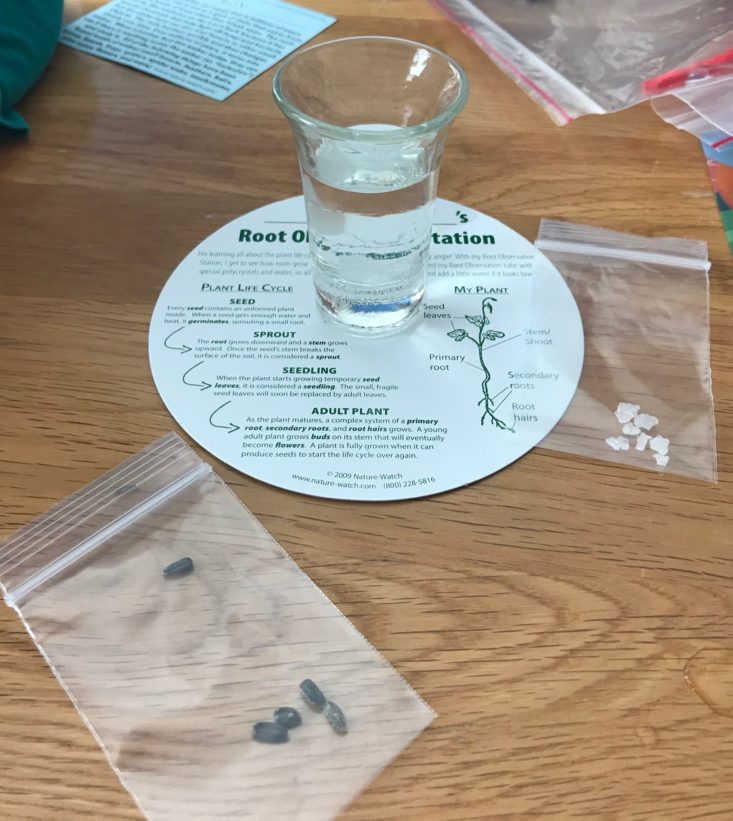
The first step was to put in our crystals- the tiny salt looking parts. We added 4 to the water and then had to wait about an hour for them to grow.

It’s pretty difficult to see, but the crystals did get much larger and almost filled the entire glass.
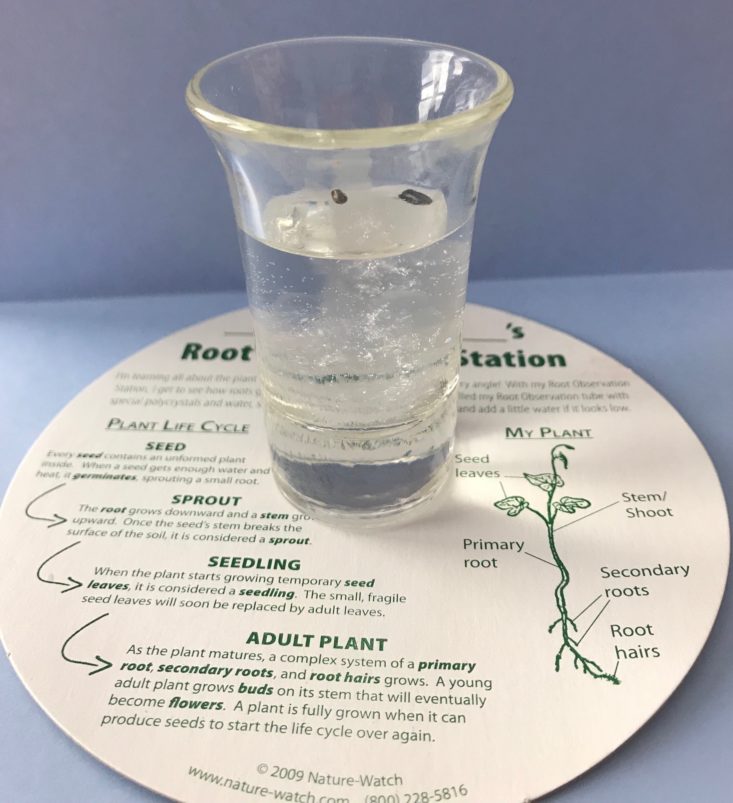
Next, we added two seeds and that was it. We keep our tube in a sunny location and observe as they grow!
This is a great experiment for teaching about observation and plant life cycle and it is perfect timing for spring! However, it’s also a good lesson in patience for a kid.
Again, it was such a simple experiment, but as part of the extended activities for this, they provide enough extra crystals and seeds for you to recreate this and try it with only indoor light. This is a great way to perform comparisons and also learn about how different factors can affect living things.
Verdict: I thought this Club SciKidz Labs box was full of a variety of great items and a broad range of activities that would really appeal to kids. The lab equipment and the fun surprises are sure to excite them when they open the box and make them feel like a real scientist.
As a parent, I loved the lab notebook and the plethora of information that was provided between that and the welcome activity guide. I also loved how organized everything was and that there was very little we had to provide on our own to complete the activities. While the nature and engineering activities didn’t turn out to be as exciting or satisfying as I had hoped they would be, I’m sure that is an experience that varies. The two actual experiments are much more scientific and will allow us to explore the idea of observation and hypothesizing a bit more as our eggs hatch and our roots grow. This box is one I would think would be great in a homeschool setting. With all of the different activities, you could easily spread them out over a month and explore them further on your own.
This box costs $29.95 and I think that was a great value for everything that was included, especially if you are using this as an educational supplement. All of the lab equipment seems like it will hold up to multiple experiments from month to month.
To Wrap Up:
Can you still get this box if you sign up today? Yes! All subscribers will receive this Welcome Box to get their labs started!
Coupon - Use code NEW17 to save 10% off your first box!
Check out more activity boxes for kids ages 5-8 and ages 9-12 in the Kids Subscription Box Directory!
Keep Track of Your Subscriptions: Add this box to your subscription list or wishlist!
What do you think of Club SciKidz Labs?





Please do not enter your email address in the Name field or in the comment content. Your email address will not be published. Required fields are marked *. Remember to post with kindness and respect. Comments with offensive language, cruelness to others, etc will not be approved. See our full comment policy here.